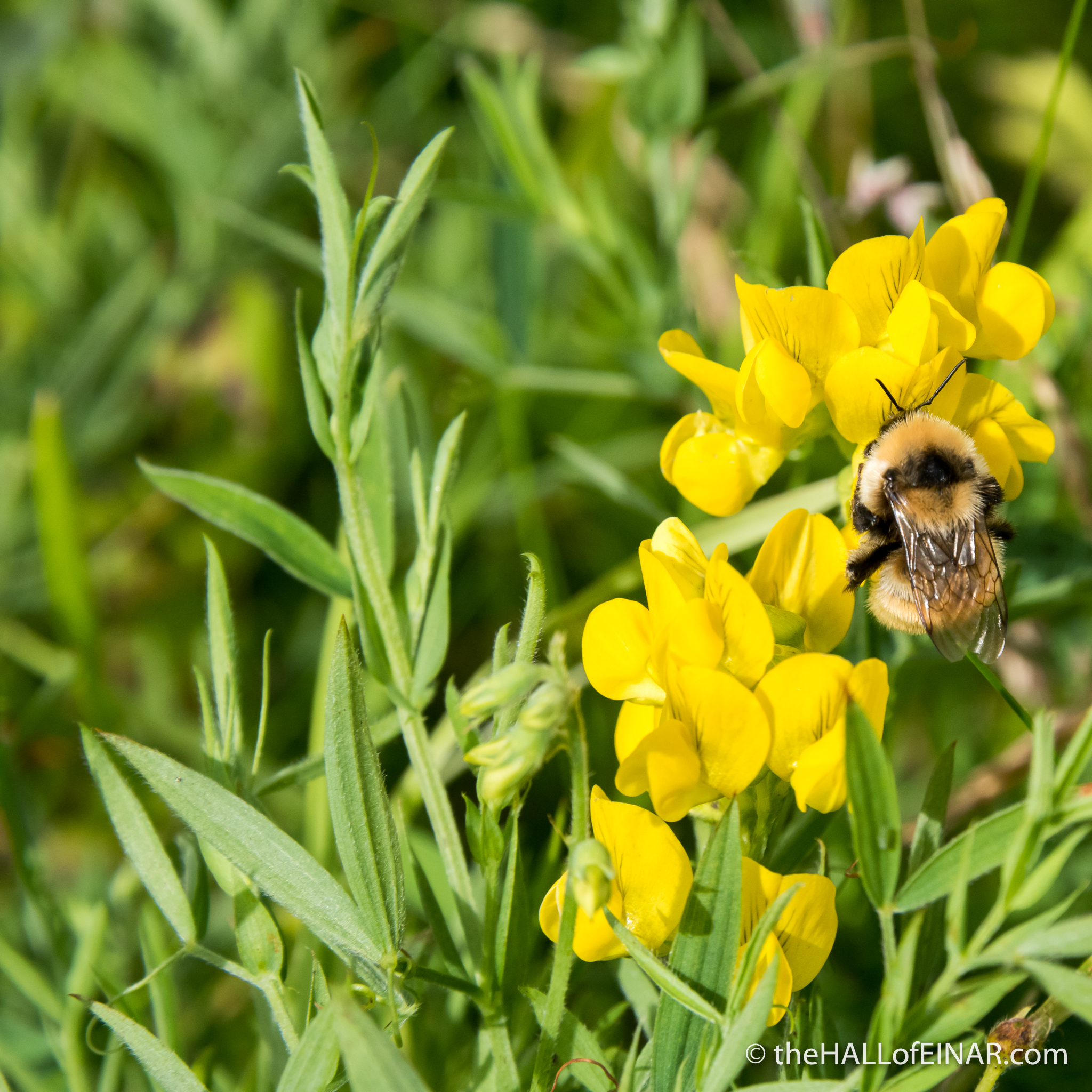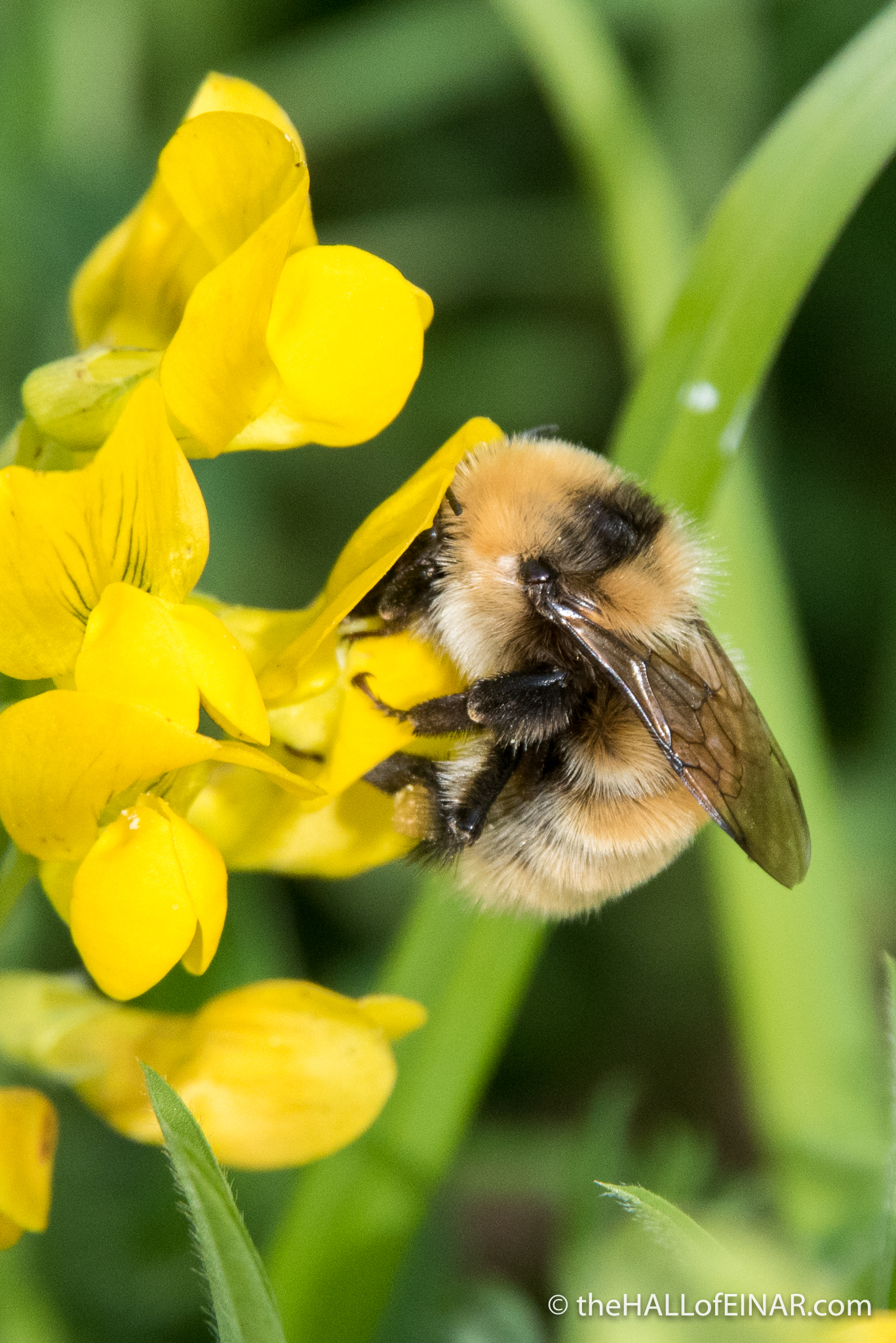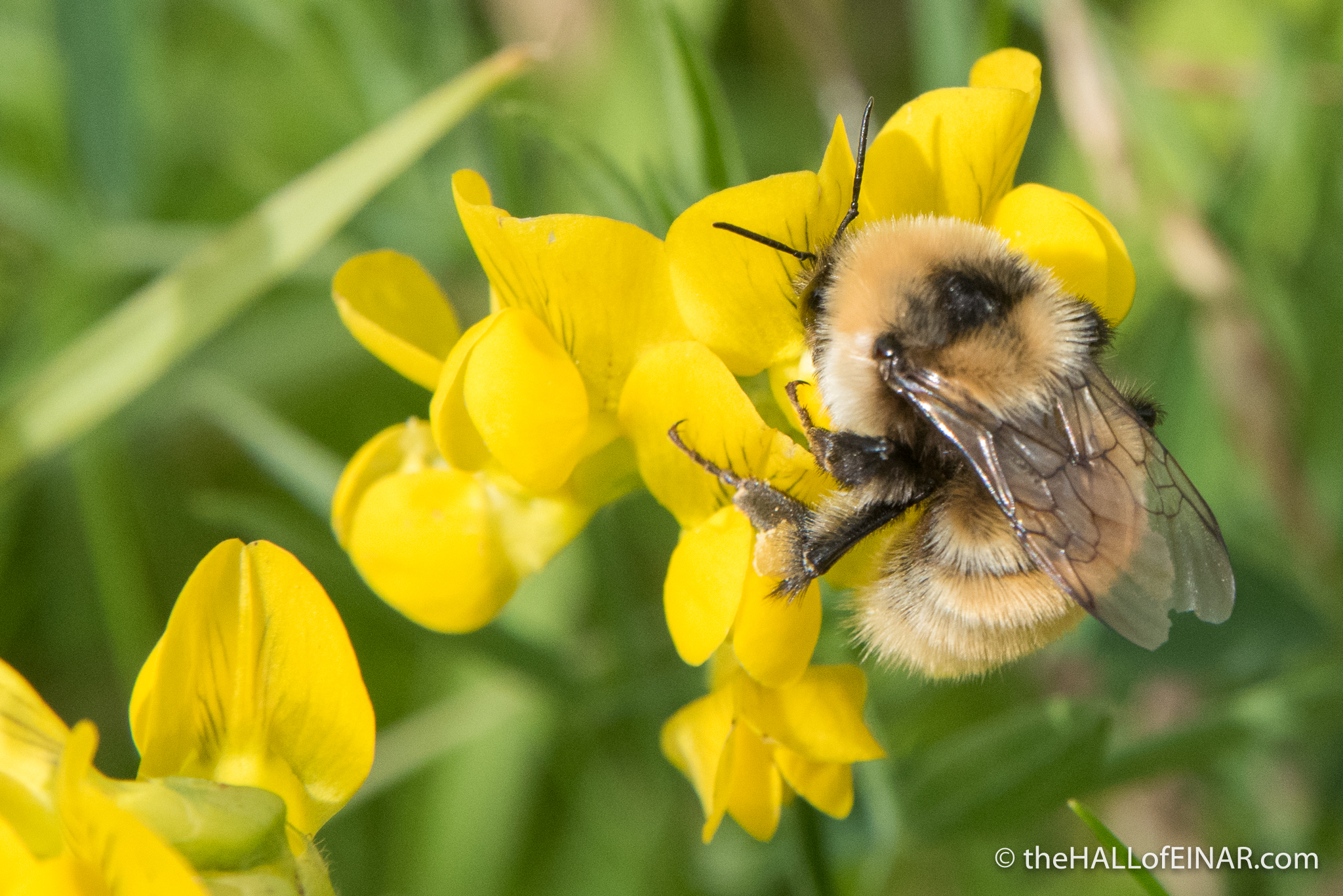Blonde Bombshell
I’m buzzing with excitement. There are big blonde bees in the garden at Einar.

I suspect they are Great Yellow Bumblebees. I check their identity and yes, they are Bombus distinguendus. What a great name.
The Bumblebee Conservation Trust says “Once found throughout most of the UK, the Great yellow bumblebee can now only be found on the North coast of Scotland, and some of the Scottish islands.” Their factsheet says “The distribution of Great yellow bumblebee has declined by 80% in the last century making it one of the UK’s rarest bumblebees.” They say “The principal causes of decline are the loss of flower-rich meadows and the intensification of farming and grazing practices.” Actually they say ‘principle’ rather than ‘principal’ so I had to correct them.
‘One of the UK’s rarest bumblebees.’ I sit down and let that sink in.

The Bumblebee Conservation Trust says “Great yellow bumblebees have three main requirements. They need:
- suitable nest site
- continuous supply of flowers from May to September, especially red clover, vetches and knapweed
- suitable place for queens to hibernate.”
I’m thrilled I’ve got them living with me.
Scottish Natural Heritage say “Threats arise from heavy summer grazing, reduction in rotation period, fertilisation and adoption of silage and monoculture, practices that result in loss of extensive, permanent, flower-rich meadows.”
Now I need to make sure nobody cuts the flower meadow for silage while I’m away or puts their pony on it when I’m not there as both will destroy the habitat while the bees are active. I now have to work out how to say “I’ve gat rare bees on my flowers,” to farmers without them thinking I’m ridiculous. Wish me luck.

It is happy feeding on the Meadow Vetchling. We’re both buzzing.
I recently bought a copy of ‘A Sting in the Tale’ by Dave Goulson. It’s a fascinating story from boy naturalist to bee scientist. He has a lot to say about Great Yellow Bumblebees and their love of rare flower meadows. You might enjoy it a great deal. I did: